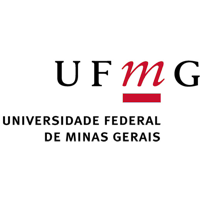A paisagem do entorno das cavernas ferruginosas é a maior responsável por suprir a cadeia trófica que dá sustentação à biodiversidade subterrânea e alterações na disponibilidade, constituição e abundância dos recursos presentes na superfície tem influência direta no equilíbrio deste frágil ecossistema. O Quadrilátero Ferrífero na regiãocentral de Minas Gerais tem passado por profundas alterações na composição e configuração da paisagem nos últimos anos em razão do aumento de áreas urbanas e de mineração, intensificando os conflitos entre o desenvolvimento econômico da região e a conservação do patrimônio espeleológico abrigado pelos Geossistemas Ferruginosos.Esta pesquisa teve como objetivo analisar a composição, configuração e evolução da paisagem no entorno das cavidades localizadas nos geossistemas ferruginosos do Quadrilátero Ferrífero, aplicando para isto uma proposta de análise sistêmica, integrando sistemas de informação geográfica, sensoriamento remoto e ecologia da paisagem com foco na conservação do patrimônio espeleológico. No que se refere à estrutura da paisagem, a pesquisa revelou que o entorno das cavidades é composto majoritariamente (40%) pela a vegetação herbácea, classe que nos últimos 30 anos sofreu redução de 12,31% em sua área total. Neste mesmo período, a área total ocupada pela mineração experimentou uma expansão de 12,69% em relação à área ocupada em 1984, sendo atualmente a segunda classe mais presente no entorno das cavernas. A análise da configuração da paisagem permitiu classificar o grau de fragmentação da cobertura vegetal na qual estão inseridas as cavidades da área de estudo, sendo possível identificar também aquelas que se encontram mais sujeitas ao efeito de borda provocado pelas ações antrópicas.
The landscape surrounding the ferruginous caves is the most responsible for supplying the trophic chain that sustains the underground biodiversity and changes in the availability, constitution and abundance of the resources present on the surface have a direct influence on the balance of this fragile ecosystem. The Iron Quadrangle in the central region of Minas Gerais has undergone profound changes in the composition and configuration of the landscape in recent years due to the increase of urban and mining areas, intensifying the conflicts between the economic development of the region and the conservation of the speleological heritage present on Ferruginous Geosystems. This research aimed to analyze the composition, configuration and evolution of the landscape in the surroundings of ferruginous caves in the Iron Quadrangle, applying a systematic analysis proposal, integrating geographic information systems, remote sensing and landscape ecology focusing on conservation of speleological heritage. Regarding thestructure of the landscape, the research revealed that the surroundings of the caves are composed mostly (40%) by the herbaceous vegetation. This class, in the last 30 years, suffered a reduction of 12.31% in its total area. In this same period, the total area occupied by mining, experienced an expansion of 12.69% in relation to the area occupied in 1984, being currently the second most present class around the caves. The analysis of the configuration of the landscape allowed to classify the degree of fragmentation of the vegetal cover in which the caves of the study area are inserted. It was also possible to identify the caves more susceptible to the border effect caused by the anthropic actions

